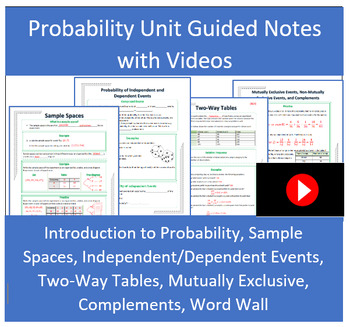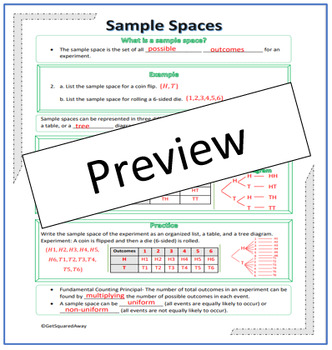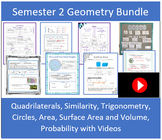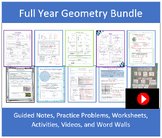Probability Unit Guided Notes and Practice with Videos
- Zip
Products in this Bundle (5)
Also included in
- This bundle includes 53 resources (plus videos for all guided notes sections) including word walls, guided notes, activities, and practice/worksheets for everything I teach during the second semester of Geometry. The scaffolded notes provide an extra opportunity to keep students engaged and providePrice $176.00Original Price $234.75Save $58.75
- This bundle includes 84 resources (with video recordings of guided notes lessons) including word walls, guided notes, activities, and practice/worksheets for everything I teach during the the year in Geometry. The scaffolded notes provide an extra opportunity to keep students engaged and provide thePrice $280.00Original Price $393.75Save $113.75
Description
The Probability Guided Notes and Practice bundle was made for a high school geometry level course, but could be used for a Probability/Statistics course or an honors level middle school course as well. Included in this bundle is four sets of guided notes and a word wall covering the following topics: Introduction to Probability, Sample Spaces, Independent and Dependent Events, Two-Way Tables, Mutually/Non-Mutually Exclusive Events, and Complements. The scaffolded notes provide an extra opportunity to keep students engaged and each set of notes includes multiple practice examples over the concepts introduced within the notes. The Introduction to Probability notes include an optional dice activity to help your students understand the difference between experimental and theoretical probability. Key vocabulary is included in each set of notes and a word wall is also included in the bundle. Worksheets are included over Introduction to Probability and Sample Spaces, Independent/Dependent Events, and Two-Way Tables. There is also a 2 page (8 question) worksheet over probabilities of mutually/non-mutually exclusive events and complements that can be found within the mutually exclusive events notes. On the worksheet, questions range from very easy to difficult, but most are moderate difficulty. Full answer key provided for all worksheets. The notes sets also come with two answer keys (one with just the notes part that can be projected for teaching use and the other with notes and examples filled in).
Also included in each zip folder is an mp4 video file recording of the lesson. This is a zoom recording of my screen as I teach through the lesson notes. All audio and worked out examples are included within the video. This would be a great resource for an online class, a flipped classroom, while you have a sub, or just as a re-teaching resource for students to use.







